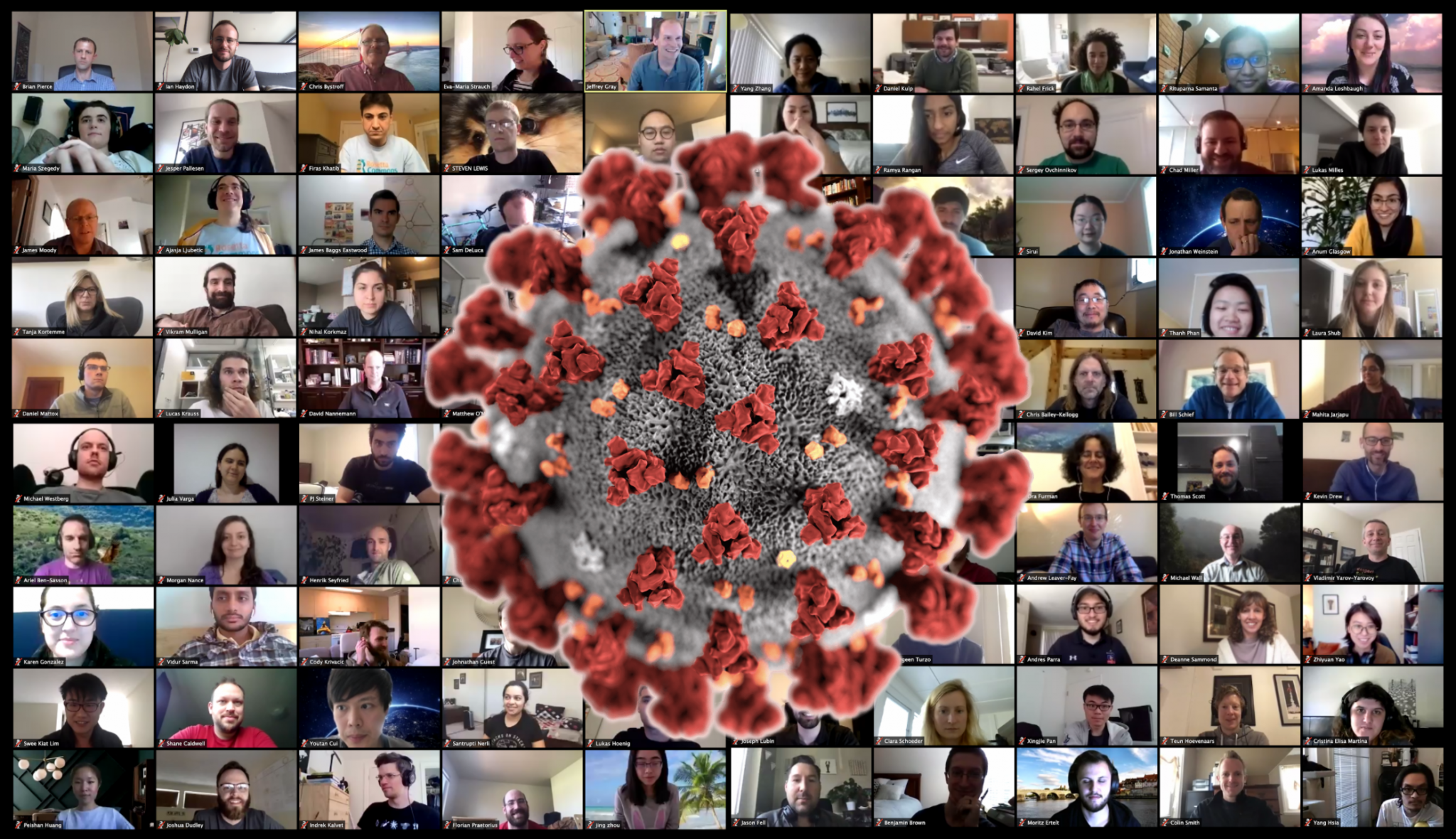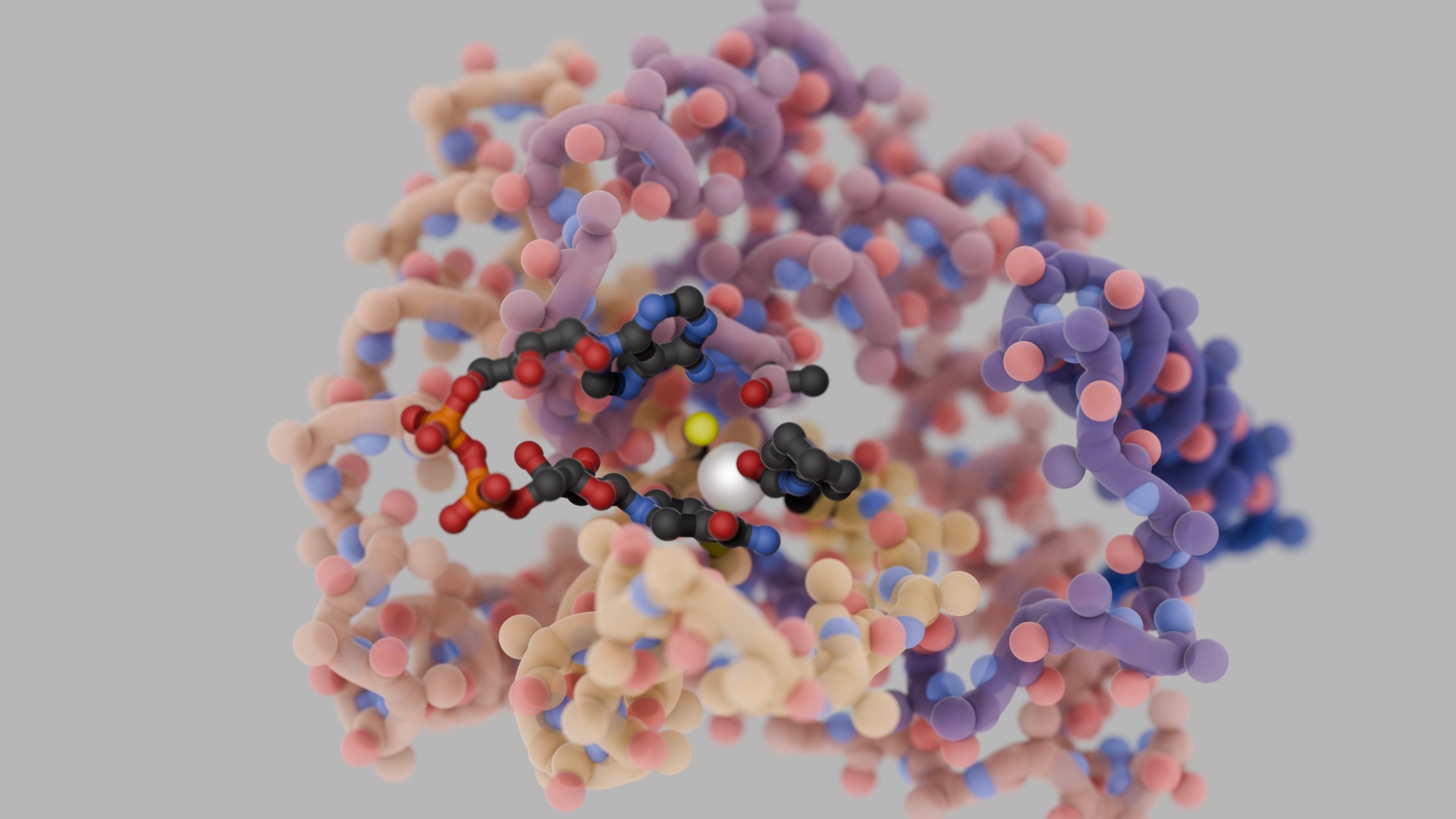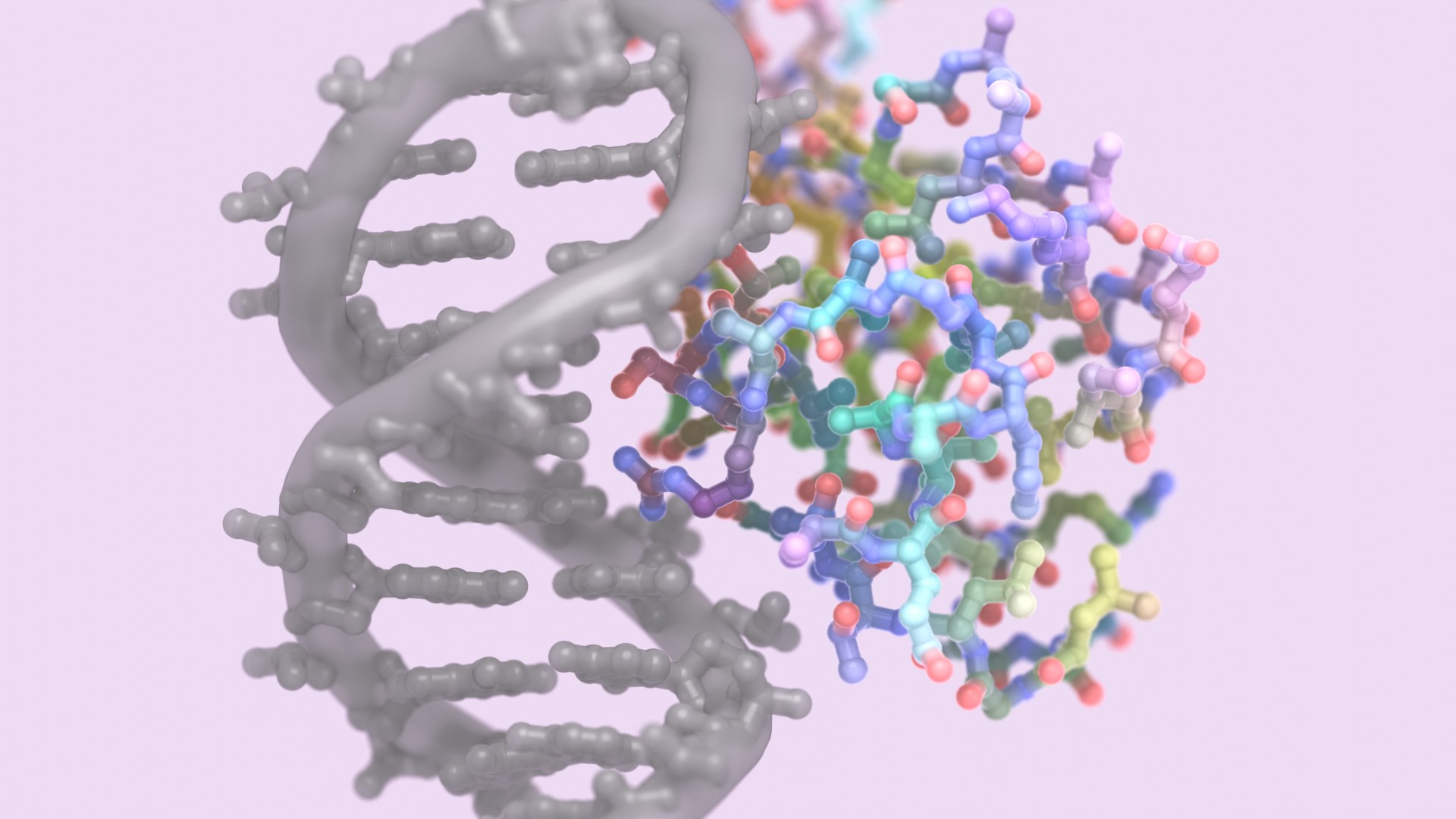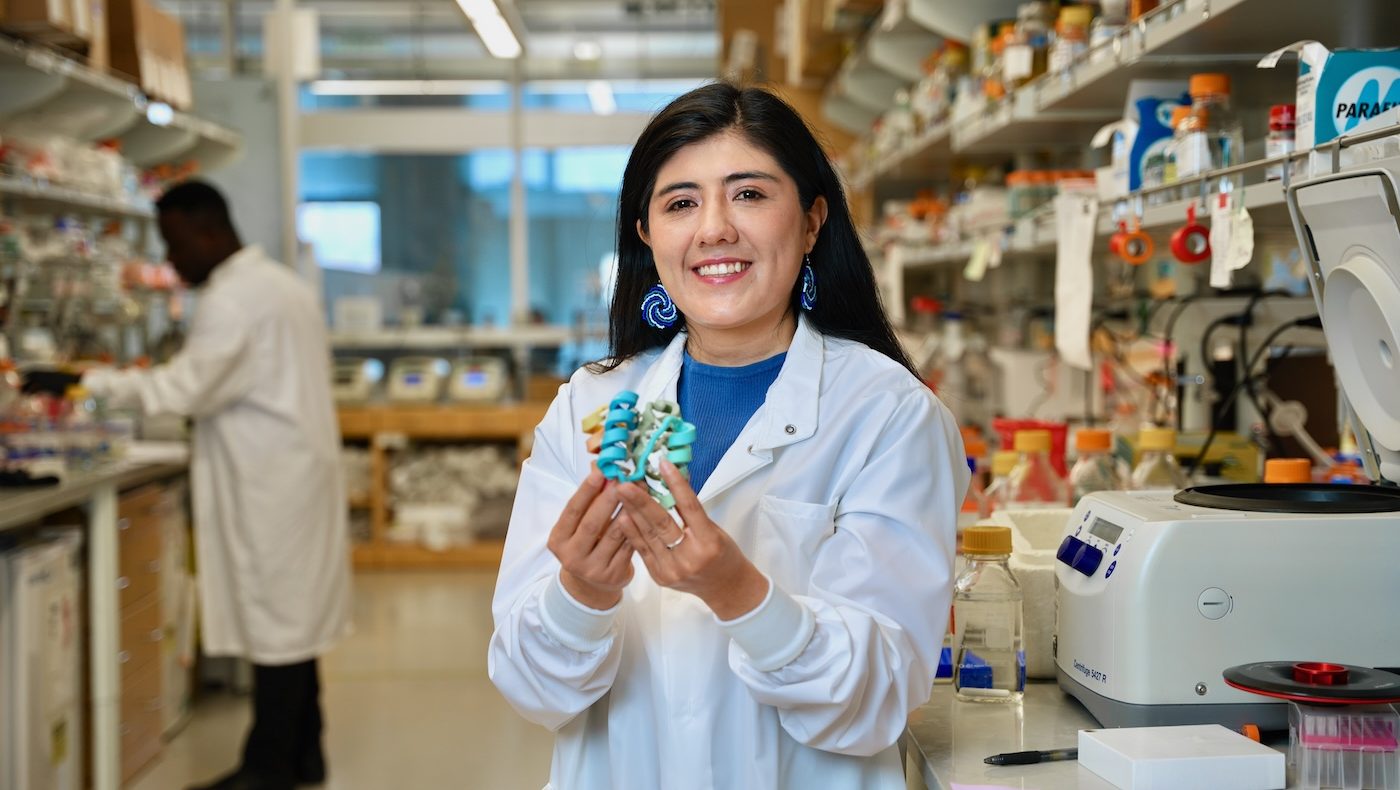On the day the number of confirmed global COVID-19 infections crossed one million, a team of over three hundred scientists from around the world kicked off a virtual conference aimed at stopping the virus.
The event was an emergency meeting of member labs from the RosettaCommons, a consortium of over 90 laboratories who together develop and apply Rosetta, a powerful molecular modeling suite. Using this software, scientists have previously created experimental vaccines, candidate antiviral drugs and helped solve the structures of important infectious disease proteins, enabling further drug development.
As of early April, dozens of RosettaCommons labs had begun research on COVID-19.
This community of computational biochemists normally gathers in person each summer and winter to share updates and spark new collaborations. Given the urgency of the pandemic, however, an emergency meeting was called by Jeffrey Gray, a RosettaCommons member and professor of chemical and biomolecular engineering at Johns Hopkins.
“I think our community has much to offer,” said Gray. “We have powerful tools that have led to new technologies and a strong tradition of collaboration. Our work is needed now.”
Computer-generated vaccines
Vaccine design was a major focus of the two-day event. Multiple researchers presented their preliminary efforts to create custom vaccines against SARS-CoV-2, the virus that causes COVID-19. Rosetta’s proven ability to enable the atomically accurate design of custom immunogens [1,2] makes it a powerful tool in the race for an effective vaccine.
Neil King, assistant professor of biochemistry at the University of Washington and member of the Institute for Protein Design (IPD), shared his lab’s efforts to design and test multiple subunit and nanoparticle vaccines. This research, which is among the only work still being done in person at the IPD, is largely supported by the Bill & Melinda Gates Foundation.
Tim Whitehead, associate professor of chemical and biological engineering at CU Boulder, is using Rosetta to stabilize proteins from SARS-CoV-2, including the spike protein, in hopes of improving their immunogenicity.
Researchers from Scripps Research and the Wistar Institute also presented their unique efforts to create novel vaccines by design, including strategies for presentation of specific and broadly neutralizing epitopes [3].
Designer antivirals
The spike protein from SARS-CoV-2 is “a beast,” noted Eva-Maria Strauch, assistant professor of pharmaceutical and biomedical sciences at the University of Georgia, Athens. Her lab is applying Rosetta to try to create proteins that could block the coronavirus spike. If successful, these molecules would constitute a new class of antivirals.
“Each [virus] has its own secrets,” said Strauch, whose initial round of experimental coronavirus antivirals will be tested in the lab soon. Strauch has been researching countermeasures for infectious disease proteins for years, but she said with COVID-19, her academic niche “became pretty real.”
Similar efforts are being persuaded in David Baker’s lab at the IPD. Graduate students Brian Coventry and Buwei Huang presented a new method for designing binders in high throughput. IPD scientist Brian Koepnick also shared how the computer game Foldit is challenging players to come up with their own antiviral designs. Ninety-nine of the most promising solutions from Foldit players will soon be tested for activity in Seattle.
The Fleichman lab at the Weizmann Institute of Science in Israel is working to automate the design of certain antivirals. Graduate student Jonathan Weinstein shared an update on their efforts to automatically design anti-coronavirus nanobodies. These natural proteins resemble antibodies, but are much smaller, potentially making them easier and cheaper to produce.
The role of machine learning
Several labs are applying techniques from machine learning to enhance their research.
In the Baker lab, graduate student Nao Hiranuma is developing deep learning models that make filtering binders designs two to three times more successful. Coming up with millions of putative binders on the computer is now relatively easy, said Coventry. “Filtering has been the name of the game.” The team aims to test only the most promising candidates, then to use data from high-throughput experiments to guide further rounds of design.
In the Meiler Lab at Vanderbilt University, machine learning techniques are being used to guide the design of SARS-CoV-2 protease inhibitors. Graduate student Benjamin Brown presented an “in-progress algorithm” that he has readapted due to the urgent need to stop COVID-19.
The power of teamwork
Even in extraordinary times, the RosettaCommons pulls together. Preliminary data and research efforts were shared openly during the conference. Members are also creating lists of resources — reagents, genes and computational methods — to help coordinate global efforts.
The RosettaCommons maintains its commitment to continue communicating and supporting member labs, including a long-standing effort to be inclusive of all people in our work. During the conference, live closed-captioning was donated by Verbit.ai.





